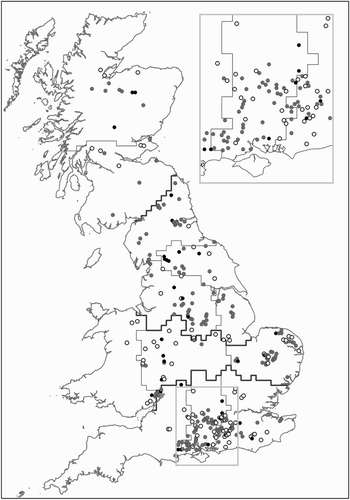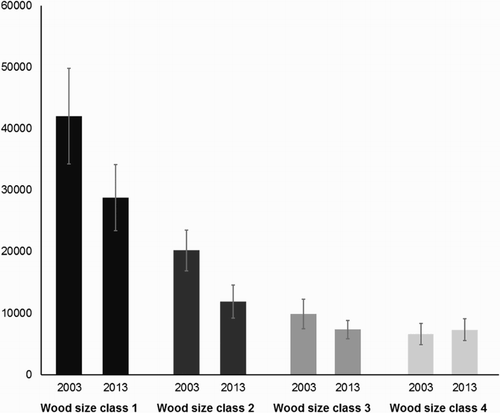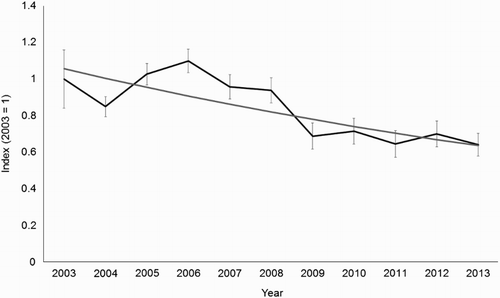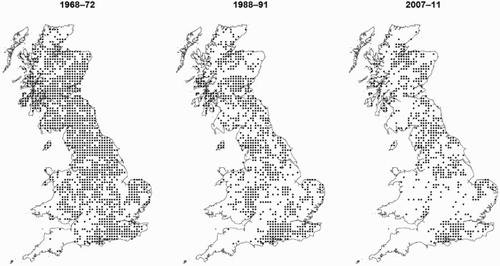Figures & data
Figure 1. Changes in occupancy of randomly selected 1 km squares where surveys of breeding Woodcock were conducted in both 2003 and 2013. Sites are classified as having remained occupied (grey), lost Woodcock (white) or been colonized (black). Sites which were unoccupied in both years are not shown. Narrow boundary lines delineate the 11 regions used in the Breeding Woodcock Survey, whilst bold lines delineate the 4 aggregated regions used in the GLMMs. The inset map shows part of the Central South region at larger scale for greater clarity of this more intensively surveyed area.

Table 1. Presence of roding Woodcock, mean numbers of registrations (based on maximum count per square) and mean densities in occupied squares in 2003 and 2013 (all weighted by the number of available 1 km squares within each region-wood-size class stratum).
Table 2. Woodcock population size estimates (males) with 95% confidence intervals and percentage change between 2003 (Hoodless et al. Citation2009) and 2013.
Figure 2. Estimates of the British population size in 2003 and 2013 for the 4 woodland size classes (1 = 10–30 ha, 2 = 31–50 ha, 3 = 51–70 ha and 4 = 71–100 ha) ±1 se. Estimates and standard errors were produced by bootstrapping.

Figure 3. Trend in the number of Woodcock registrations at annual survey sites between 2003 and 2013. Index values are based on the mean number of registrations observed in 2003 and are back-transformed year coefficients from a Poisson GLM (error bars ± 1 se). A regression line is fitted through the index values.

Figure 4. Chronological maps of Woodcock presence on a 10-km square scale in each of the 3 Atlas periods (1968–72, 1988–91 and 2007–11). Where evidence of breeding was only categorized as ‘possible’, records have been omitted to avoid inadvertent inclusion of migrant Woodcock.

